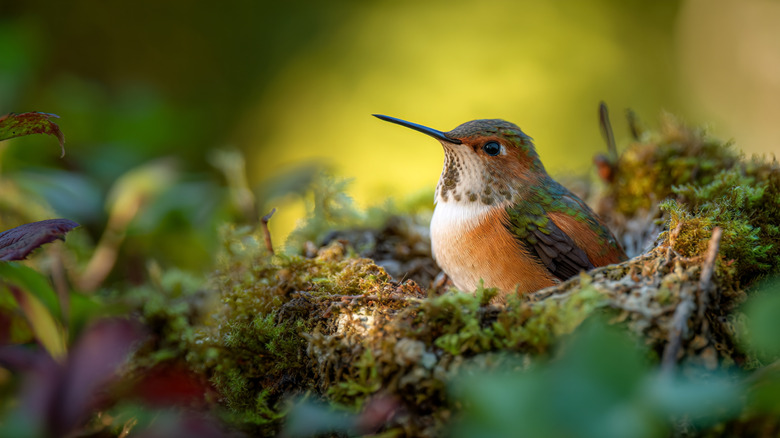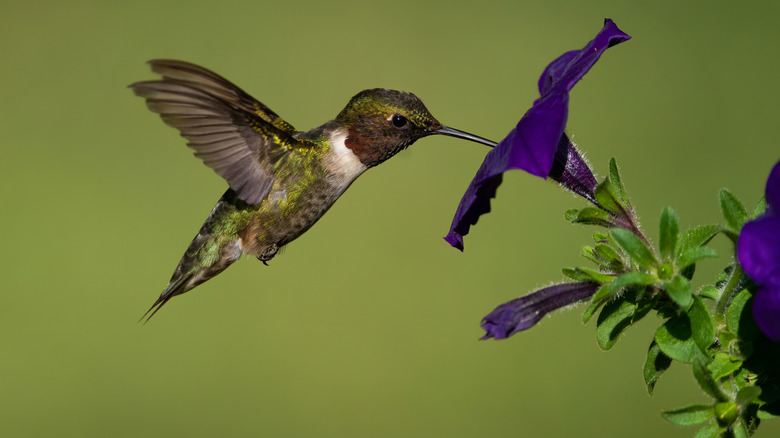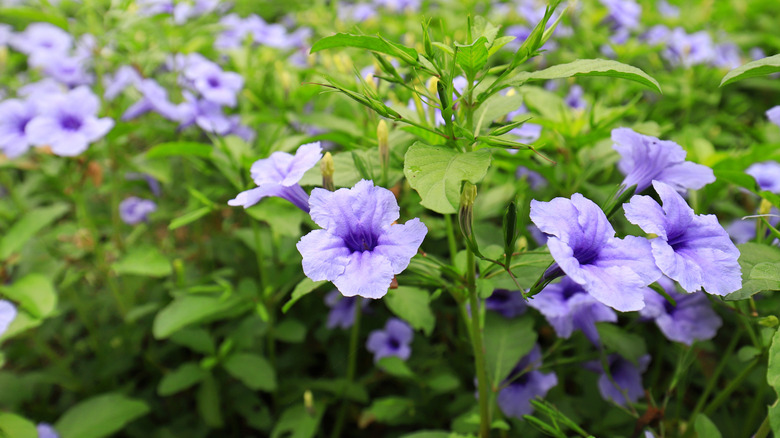Brighten Up Your Yard With A Purple Flowering Ground Cover Hummingbirds Love
Who doesn't love the sight (and sounds) of beautiful hummingbirds wandering about from flower to flower in their yard and feeding on nectar as if magically suspended mid-air? While you sit and take in the joys of your garden, the acrobatics of these beloved hummers make your gardening efforts feel complete. No wonder gardeners try every trick in their arsenal to get these jewel-colored birds to nest in their yards. Although there are a number of flowering plants that will have hummingbirds flocking to your yard, a certain ground cover stands up to this task just as well: wild petunias.
Wild petunia (Ruellia humilis), named after French botanist Jean Ruel, is a low-growing perennial from the Acanthaceae family – different from the Solanaceae family of the annual petunias that are more common — that produces a stunning purple flower that thrives in late summer heat and attracts a host of pollinators, hummingbirds being one of them. The plant only grows up to about 2 feet in height (hence the name humilis, which is Latin for "short"), and its sprawling growth habit and self-seeding ability make it an excellent option as a ground cover. So, if you have been looking for plants to cover bare areas in your gardens, while moving its aesthetic quotient up a few notches, wild petunias could be the perfect choice.
Why hummingbirds are attracted to wild petunias
Hummingbirds' vision allows them to see ultraviolet light — something humans can't do. And they are instantly attracted to bold and iridescent colors. They love bright flowers that are full of nectar and naturally shaped in a way that makes them easily accessible for feeding. Wild petunias, very much like their annual namesakes, fulfil all of these categories. This makes them one of the best types of tubular flowers to lure hummingbirds to your yard. While each wild petunia bloom only lasts for a day, the plant goes on blooming from early spring to late fall.
Moreover, gardeners who like diversifying their hummingbird-attracting arsenal may also pair up wild petunias with bee balms. Both of plants are excellent companions since they grow in similar conditions and attract the ruby-throated hummingbirds. Apart from attracting and being a source of nectar for hummingbirds, wild petunia also does a service to the ecosystem of your gardens by acting as a larval host plant for many butterflies species, like the buckeye and white peacock.
How to grow wild petunias as ground cover in your yard
Wild petunias are hardy in USDA Hardiness Zones 4 to 8 and like having full sun exposure for at least six hours every day. They are very adaptable and can grow in almost any soil, be it moist and alkaline clay or well-drained sandy soil. They are also drought-tolerant and won't bother you much with the hassles of watering once they are established. Having said that, you will need to water them regularly while they are still growing.
You can propagate wild petunias from stem cuttings, by dividing existing clusters, or by growing them from seeds. Keep in mind that seeds will need a period of cold-stratification (about 70 days) to germinate well, after which you can sow them in a moist potting medium and store the pot in a nice, warm location. The seeds will start to germinate in about four to six weeks. When the seedlings grow up to about a few inches, you can move them to your garden and watch the blooms and hummers arrive over early summers.
Their disease and pest resistant nature makes wild petunias extremely easy to care for. You can prevent their spread, if necessary, by deadheading spent flowers. Keep in mind that despite being native to many eastern states, some other species of wild petunias, such as Ruellia simplex, have been declared invasive in states like Florida.


